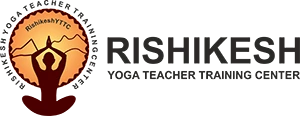Yoga for Beginners - 11 Easy Yoga Poses
You want to start practising yoga but not sure where to start from? In this article about yoga for beginners, you can check out the 11 basic and easy yoga poses for beginners. By starting to practice yoga regularly we begin to tune in to the mind and body connection allowing us to focus on the areas that feel weak or that feel pain and learn how to address them so that we can begin to feel relieved. The more control we have in our mind, the more power we have in our life.
Four components really make yoga what it is: physical posture, the stretching exercises and movements, breathing techniques and relaxation technique. yoga for beginners is a great way to achieve all these benefits and keep your body fit.
What are some easy yoga poses for beginners?
If you are new to yoga then you can start your practice with these easy yoga poses for beginners at home:
- Vajrasana
- Bharadvajasana
- Trikonasana
- Marjaryasana
- Malasana
- Dandasana
- Paschimottanasana
- Vasisthasana
- Setu Bandhasana
- Urdhva Mukha Svanasana
- Natarajasana
Yoga for Beginners at Home
Let's now read about each of these beginner yoga poses in detail -
Yoga for Beginners - Vajrasana (Diamond Pose)
The word Vajrasana is derived from two Sanskrit words - “Vajra” meaning diamond or thunderbolt and “Asana” which of course means pose. The Vajrasana is a kneeling pose of the Hatha Yoga practice.
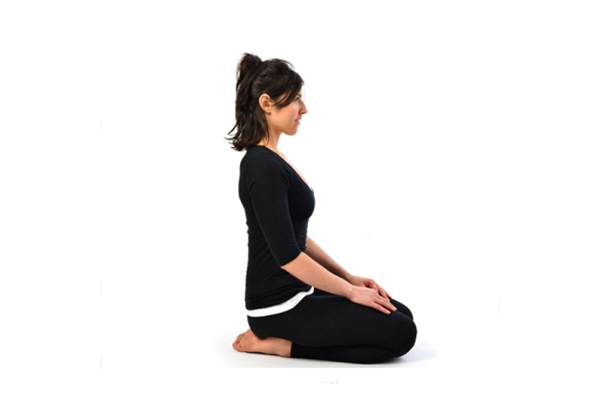
How to perform Vajrasana (Diamond Pose)?
- First, sit right in Sukhasana.
- Now stretch out your legs.
- Slowly bend the legs one by one until you are seated in between your both feet.
- Adjust your feet to be closer to the buttocks and stretch the hands forward to place your palms covering the knees.
Benefits of Vajrasana
- This beginner yoga pose will make your joints and ligaments strong as well as flexible.
- Great workout for the muscles around the pelvic region.
- Vajrasana stimulates the functions to kidneys, liver and pancreas.
Yoga for Beginners - Bharadvajasana (Bharadvaja's Twist)
Bharadvajasana is another great yoga pose for beginners. This pose is a versatile seated twist and is recommended for both beginners as well as intermediate level practitioners.
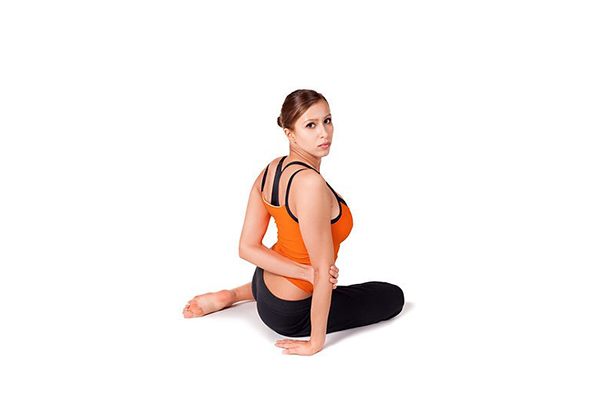
How to perform Bharadvajasana (Diamond Pose)?
- Fold your left knee and keep it in Vajrasana, now bend the right leg from the knee and keep it on your thigh.
- Place your left palm below the right thigh, twist and hold the right toe with the right hand.
- Look over right shoulder and breath.
- Exhale and release the right toe and come to the center.
- Keep lengthening the spine with each breath and twist your body further with each exhalation.
- Exhale release the toe and come to the center and relax.
Benefits of Bharadvajasana
- Relieves lower back and neck pain.
- Improves digestion.
- Massages abdominal organs.
Looking for a perfect Yoga Teacher Training in Rishikesh?
Check out our 5 stars rated 200 Hour Yoga TTC, 300 Hour Yoga TTC, 500 Hour Yoga TTC. Or our 7 days and 15 days yoga retreat in Rishikesh
Yoga for Beginners - Trikonasana (Triangle Pose)
Trikonasana or the Triangle pose is an easy standing asana for beginners in modern yoga. The word “Trikonasana” is derived from the Sanskrit words “Trikon” and “asana” meaning posture or seat.
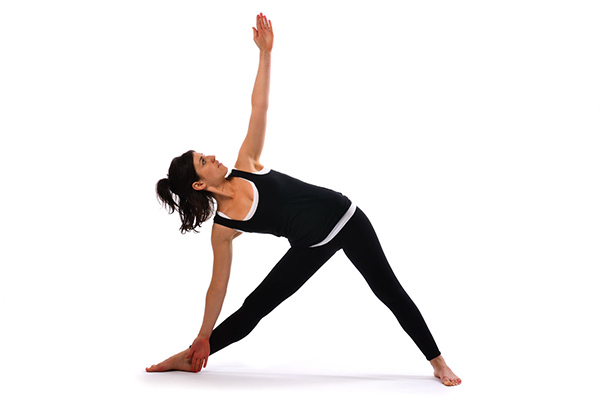
How to perform Trikonasana (Triangle Pose)?
- Take a deep breath.
- Stretch your arms and bring them to your shoulder level.
- Bend your right foot out to a 90 degrees angle and exhale.
- Place your right hand on your right shin bone.
- Reach the left arm towards the ceiling and gaze at your left thumb.
- Inhale, bend the right knee and come back.
- Repeat on the other side.
- Exhale, bend to the left taking care not to bring the body forward, navel pulled in, core engaged.
- Keep taking long deep breaths and feel the stretch on the side of the trunk.
- Inhale and bend the left knee and come back.
Benefits of Trikonasana
- Strengthens legs, ankles and feet.
- Stretches hips, hamstrings, calves, and spine.
- Opens chest and shoulders.
Yoga for Beginners - Marjaryasana/Bitilasana (Cat/Cow Pose)
This beginner yoga pose is known as cat/cow pose because it resembles the position of a standing cat or a cow. This is a very simple yet powerful pose which beginners can do easily. This pose provides a gentle massage to your spine and the organs in your belly.
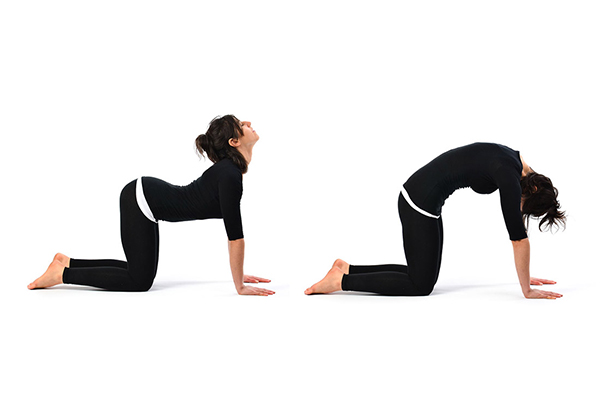
How to perform Marjaryasana/Bitilasana (Cat/Cow Pose)?
- Come down on your hands and knees and stretch your fingers nice and wide.
- Tuck in your toes.
- Arching your back, look at your tummy and stretch your spine.
- Now it's time to practice the cow pose.
- Dip your belly down and lift your tail and expand your chest.
- Slowly breath in and out.
Benefits of Marjaryasana/Bitilasana
- Improve posture.
- Improves spine alignment.
- Strengthens and stimulates abdominal muscles.
Yoga for Beginners - Malasana (Garland Pose)
Malasana is a squatting asana for yoga beginners. The word is derived from two Sanskrit words “Mala” and “Asana”. This is a hip-opening pose and is good for stretching ankles, groin, lower hamstrings, back torso and for strengthening quadriceps.
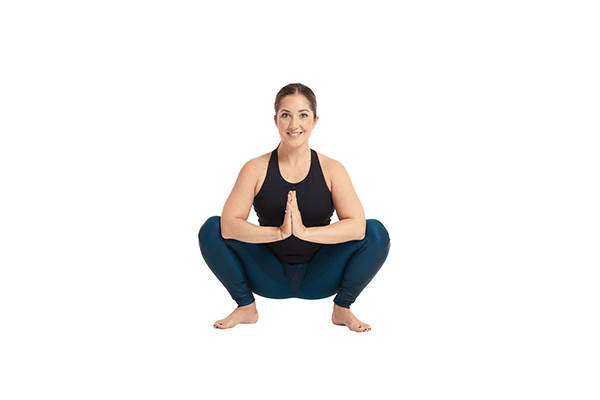
How to perform Malasana (Garland Pose)?
- Stand straight with feet apart.
- Raise your arms and place your hand in “Namaste” position.
- Bend your knees deeply, sinking down until your hips are lower than the body.
- Now it's time to practice the cow pose.
- Push your elbows into your knees to open your hips and gently press the side of your knees towards your elbows.
- Hold the pose from 30 seconds to 1 minute.
- Release the pose either sitting back or pushing back after standing
Benefits of Malasana
- Stretches the lower backs and hips.
- Improves balance.
- Increases blood flow in Pelvis.
Yoga for Beginners - Dandasana (Staff Pose)
A very simple yoga pose for beginners, Dandasana is a seated pose and even if it is a very easy yoga pose it has a number of benefits. It strengthens deep muscles of the lower back, abdomen and muscles in the pelvis.
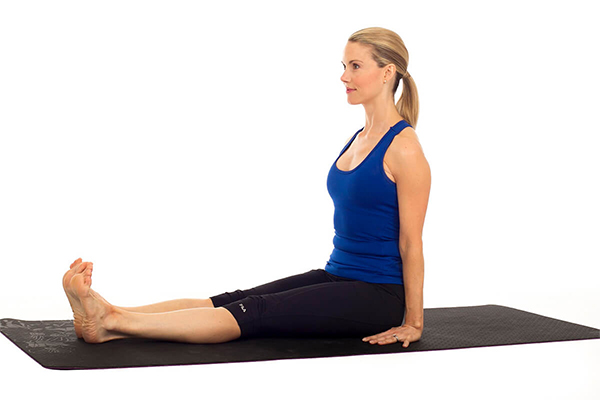
How to perform Dandasana (Staff Pose)?
- Sit on the floor with your back straight and your legs extended out in front of you, your feet should be together and flexed.
- Press your hips onto the floor and point the crown of your head to the ceiling to lengthen and straighten the spine making it perpendicular to the floor.
- Place your palms on the mat next to your hips.
- Lift your chest and drop your shoulder blades down towards your back.
- A simple way to check alignment is to sit with your back against the wall.
- Breathe deeply and calmly as you hold this posture for twenty to thirty seconds.
Benefits of Dandasana
- Stretches shoulders and chest.
- Improves posture.
- Improves resistance to back and hip injuries.
Yoga for Beginners - Paschimottanasana (Seated Forward Bend)
Paschimottanasana is a classic and an easy pose for beginners from hatha yoga. It is a good pose for stretching the entire back of your body from your calves to hamstrings and spine. It is a calming yoga pose and helps to relieve stress.
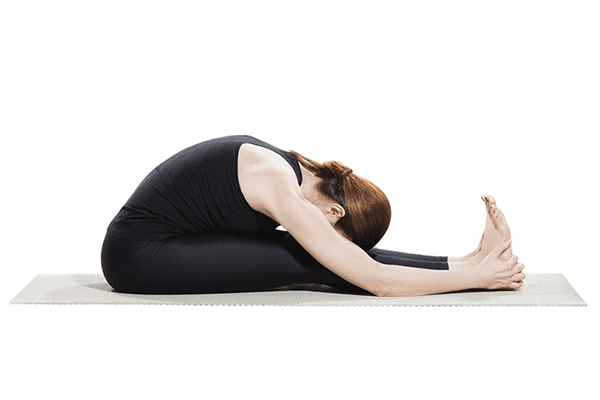
How to perform Paschimottanasana (Seated Forward Bend)?
- Bring both your legs out in front of you, pointing the toes inwards.
- Check that your back is straight and the spine is extended with the chest opening giving your body and your lungs enough space to breath.
- The rib-cage should have enough space for your lungs to be able to expand, as your inhale you raise both of your arms up extending the spine further bringing the hands in align with the ears.
- Lift your chest and drop your shoulder blades down towards your back.
- As you exhale you bring the chin out and come down as low as you can.
- Or you can even take the arms around your feet and come down.
- As you raise up you bring the hands in alignment with the ears, inhale and extend the spine upwards
- Exhale and bring both hands down.
Benefits of Paschimottanasana
- Helps relieve stress and mild depression.
- Improves digestion.
- Stimulates liver and kidneys.
Yoga for Beginners - Vasisthasana (Side Plank Pose)
Vasisthasana is a balancing asana in the modern yoga exercises. Its full version as taught by B.K.S Iyengar consists of raising one of the two legs perpendicular to the floor. The beginner version of the side plank is much simpler.
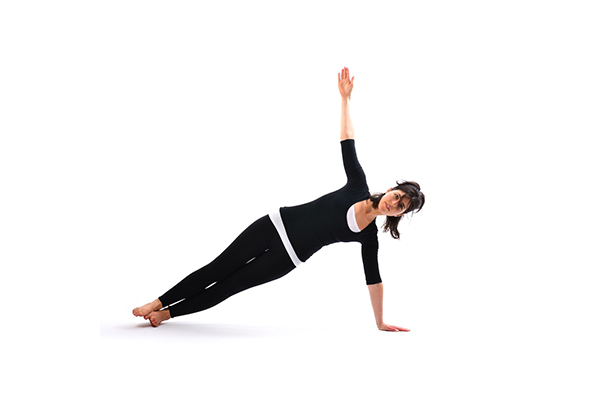
How to perform Vasisthasana (Side Plank Pose)?
- First, go to a mountain posture and place your palms on the mat.
- Drop your head down and stretch your tailbone up.
- With your nose parallel to the ground and push your shoulders in front of the wrists.
- Now engage your core deep from beside of your abdomen.
- Gently drop your right hand down and then take your left arm up.
- Try to press the right palm from your armpit.
- Engage your gluteal muscles and pull the navel inside and push your pelvic bone up
- Gently take your left palm up and then turn your neck and look at your left palm and keep lifting your hips up, stay here for 4 to 5 breaths.
Benefits of Vasisthasana
- Improves core strength.
- Improves balance.
- Strengthens arms and wrists.
Yoga for Beginners - Setu Bandhasana (Bridge Pose)
The word “Setu” stands for bridge in Sanskrit and the word “bandha” stands for bandha and hence it is also known as the Bridge Pose. This beginner yoga pose works on your hips and joints.
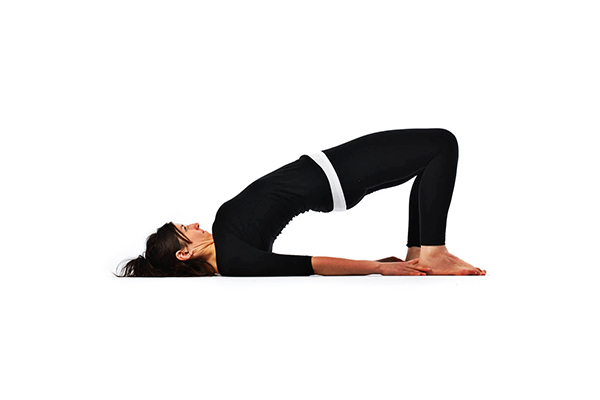
How to perform Setu Bandhasana (Bridge Pose)?
- Begin by laying down on your back and place your heels as close as possible to your butt.
- Hold your ankles, make sure your thumb is outside.
- When you are ready, slowly inhale and lift your hips all the way up.
- Now try and reach as high as possible but your breaths should be in the normal range.
- Stay here for a couple of deep breaths.
- Engage your gluteal muscles and pull the navel inside and push your pelvic bone up
- Once you release the posture, exhale and gently put your hips down to the mat and relax.
Benefits of Setu Bandhasana
- Improves blood circulation.
- Stimulates the lungs, thyroid glands and abdominal organs.
- Improves digestion.
Yoga for Beginners - Urdhva Mukha Svanasana (Upward-Facing Dog)
This great and easy yoga pose for beginners is one of the positions in the “Surya Namaskar” or the Sun Salutation. This pose is quite similar to the “bhujangasana ”or the cobra pose. This is a back-bending yoga pose and strengthens the arms, wrists and spine.
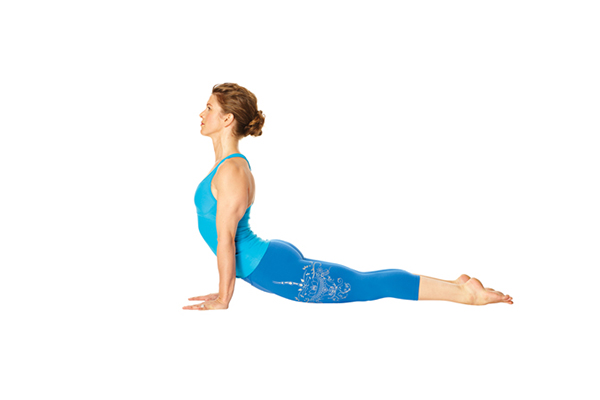
How to perform Urdhva Mukha Svanasana (Upward-Facing Dog)?
- Lay upside down on your yoga mat.
- Keep your arms towards the sides of your shoulders and you lift up as much as you can.
- lift up your hips, knees and just keep your ankles and toes on the floor.
- Keep yourself in an elevated position but at the same time make sure your hip is dropping down towards the floor.
- Straighten your elbows and expand your chest.
- Take five deep long breaths in this position.
Benefits of Urdhva Mukha Svanasana
- Improves posture.
- Firms the buttocks.
- Therapeutic for asthma.
Yoga for Beginners - Natarajasana (Lord of the Dance Pose)
Natraj is another name for Lord Shiva and his dance symbolizes the cosmic energy. This pose is also known as the dancer's pose and is derived from a pose of a classical Indian dance known as Bharatnatyam.
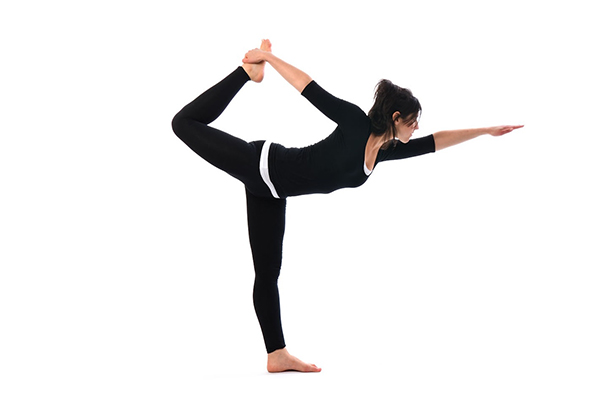
How to perform Natarajasana (Lord of the Dance Pose)?
- Stand in the mountain pose.
- Shift your weight onto your right foot.
- Bend your left knee and grasp the inside of the foot or ankle with a left hand.
- Raise your right arm over your head and gently press your left foot into your hand.
- Raise your toes towards the ceiling until your thighs are parallel to the floor or higher.
- Relax your shoulders.
- Exhale, breath, exhale and gently release the pose.
Benefits of Natarajasana
- Great asana for losing weight and burning calories.
- Strengthens and stretches your ankles, legs, thighs, chest, abdomen and hips.
- Develops greater flexibility in your spine, shoulders and hamstrings.
